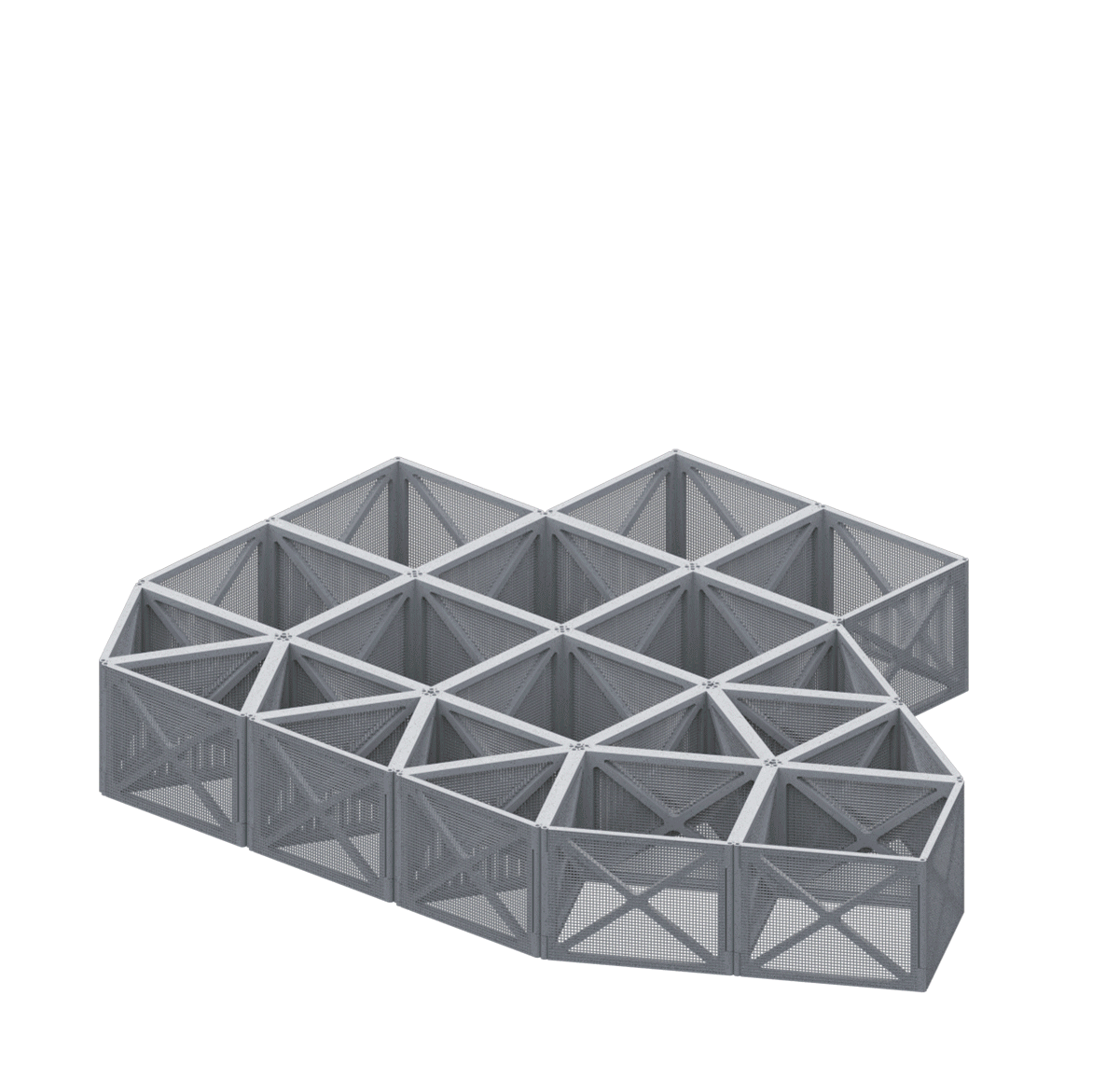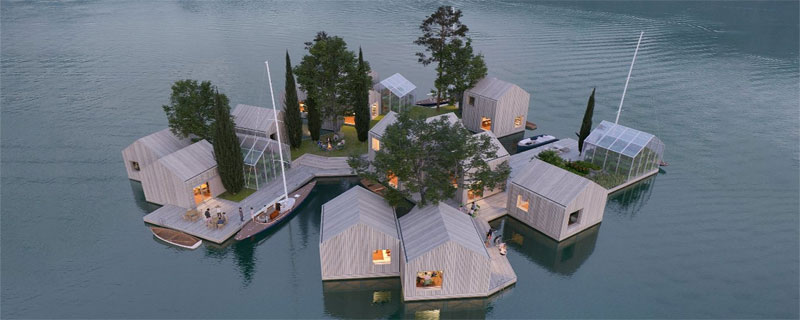Danish Maritime Architecture Studio MAST has developed the “Land on Water” project, a system that provides an adaptable solution to building almost anything on the water: floating homes, campsites, even small parks, and community centers. The project represents a response to the acknowledgment of raising sea levels and increased risks of urban flooding, which has led to a growing interest in adapting architecture to be built on water. The “Land on Water” proposes a flexible and sustainable solution, a departure point from previous solutions, which are proven to be difficult to adapt, transport and are often using unsustainable materials such as polystyrene-filled concrete foundations or plastic pontoons. The project is developed with the support of Hubert Rhomberg & venture studio FRAGILE.
The system is based on flat-pack floating foundations, easy to transport and assemble in various configurations. The system takes inspiration from gabion constructions, a technology that utilizes mesh cages filled with rubble to create low-cost foundations or walls. In this case, the flat-pack cages, made from reinforced, recycled plastic, are filled with locally sourced, upcycled floatation materials that can support the weight of the structure on top. This has the added advantage that the floatation material can be adapted or adjusted at any time to the weight of the building on top.

The Land on Water promises to create a sustainable solution for both above and below water. The floating foundations can provide a good habitat for fish and crustaceans, while also giving an anchor point for Mollusca and seaweed, thus contributing to enriching the biodiversity of the local ecosystem. The system also avoids using toxic materials such as the anti-fouling paints often used to treat steel and concrete foundations.
The modular and adaptable character of the systems can also encourage communities to grow and develop in a dynamic and organic matter. The architects see this as an alternative to the large master-planned floating cities which often create rigid structures and are thus liable to repeat the mistakes of planners in the mid-20th century.
In a similar effort to take advantage of the potential of floating stuctures, Netherlands-based architecture, urban planning, and research firm Waterstudio.NL have revealed the designs of a first-of-its-kind “island city” developed along a functional grid across a 200-hectare lagoon on the Indian Ocean, the Maldives Floating City. The city of Amsterdam’, collaborating with Dutch architecture practice Space&Matter, is also implementing Schoonschip, an innovative circular neighborhood, a community-driven project set to become a prototype for floating urban developments.
Source: Arch Daily





Leave a Reply
Want to join the discussion?Feel free to contribute!